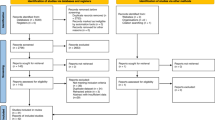Abstract
Francois Gigot de la Peyronie, surgeon to Louis XV of France, has become synonymous with the rather enigmatic though not uncommon condition of Peyronie's disease (PD), a localized connective tissue disorder of the penile tunica albuginea. The true prevalence of Peyronie's disease is unknown. Therefore, we decided to perform an evaluation of existing epidemiological data. A prevalence rate of 3.2% was determined in male inhabitants of the greater Cologne area. This is much higher than revealed by the data reported up to now, thus rendering the accepted prevalence rates of 0.3% to 1% untenable. The actual prevalence of Peyronie's disease may be even higher, considering many patients' reluctance to report this embarrassing condition to their physicians. Along these lines, most clinicians note that the number of Peyronie's patients has increased since the advent of oral sildenafil. Comparably high prevalences are known for diabetes and urolithiasis, suggesting a greater frequency of this rare disease than formerly believed.
This is a preview of subscription content, access via your institution
Access options
Subscribe to this journal
Receive 8 print issues and online access
$259.00 per year
only $32.38 per issue
Buy this article
- Purchase on Springer Link
- Instant access to full article PDF
Prices may be subject to local taxes which are calculated during checkout


Similar content being viewed by others
References
Dunsmuir WD, Kirby RS . Francois de La Peyronie (1678–1747): the man and the disease he described Br J Urol 1996 78: 613–622
Byström J, Rubio C . Induratio penis plastica (Peyronie's disease). Clinical features and etiology Scand J Urol Nephrol 1976 10: 12–20
Gelbard MK, Dorey F, James J . The natural history of Peyronie's disease J Urol 1990 144: 1376–1379
Devine CJ, Somers KD, Jordan GH, Schlossberg SM . Proposal: trauma as the cause of the Peyronie's lesion J Urol 1997 157: 285–290
Jarow JP, Lowe FC . Penile trauma: an etiologic factor in Peyronie's disease and erectile dysfunction J Urol 1997 158: 1388–1390
Wahl SM . Inflammation and growth factors J Urol 1997 157: 303–305
Ralph DJ et al. The genetic and bacteriological aspects of Peyronie's disease J Urol 1997 157: 291–294
Chilton CP, Westwood WM, Pryor JP . Factors associated in the aetiology of Peyronie's disease Br J Urol 1982 54: 748–750
Carrieri MP et al. A case–control study on risk factors for Peyronie's disease J Clin Epidemiol 1998 51: 511–515
Schneider HJ, Rugendorff EW, Röhrborn C . Pathogenesis, diagnosis and therapy of Induratio penis plastica (IPP) Int Urol Nephrol 1985 17: 235–244
Polkey HJ . Induratio penis plastica Urol Cut Rev 1928 32: 287–308
Urologia. International inquiry on the therapy of Induratio penis plastica Trevisco 1966 33: Fasc.II
Ludvik W, Wasserburger K . Die Radiumbehandlung der Induratio penis plastica Z Urol Nephrol 1968 61: 319–325
Lindsay MB et al. The incidence of Peyronie's disease in Rochester, Minnesota, 1950 through 1984 J Urol 1991 146: 1007–1009
Devine CJ Jr . Editorial International conference on Peyronie's disease J Urol 1997 157: 272–275
Darling CA, Davidson JK Sr, Conway-Welch C . Female ejaculation: perceived origins, the Grafenberg spot area, and sexual responsiveness Arch Sex Behav 1990 19: 29–47
Smith BH . Subclinical Peyronie's disease Am J Clin Path 1969 52: 385–390
Shaw K, Puri K, Ruiz-Deya G, Hellstrom WJG . Racial considerations in the evaluation of Peyronie's disease J Urol 2001 165: 170: 687A
Hauck EW, Heitz M, Schreiter F, Weidner W . Induratio penis plastica. Peyronie's disease Akt Urol 1999 30: 386–404
Weidner W, Schroeder-Printzen I, Weiske WH, Vosshenrich P . Sexual dysfunction in Peyronie's disease: an analysis of 222 patients without previous local plaque therapy J Urol 1997 157: 325–328
Chilton CP, Castle WM, Westwood CA, Pryor JP . Factors associated in the aetiology of Peyronie's disease Br J Urol 1982 54: 748
Hinman F Jr . Etiologic factors in Peyronie's disease Urol Int 1980 35: 407
Williams JL, Thomas GG . The natural history of Peyronie's disease Proc Roy Soc Med 1968 61: 876
Author information
Authors and Affiliations
Corresponding author
Rights and permissions
About this article
Cite this article
Sommer, F., Schwarzer, U., Wassmer, G. et al. Epidemiology of Peyronie's disease. Int J Impot Res 14, 379–383 (2002). https://doi.org/10.1038/sj.ijir.3900863
Received:
Accepted:
Published:
Issue Date:
DOI: https://doi.org/10.1038/sj.ijir.3900863
Keywords
This article is cited by
-
A systematic review of non-surgical management in Peyronieʼs disease
International Journal of Impotence Research (2023)
-
Diagnosis and treatment patterns of Peyronie’s disease among different racial, ethnic, and regional groups in the Veterans Affairs healthcare system
International Journal of Impotence Research (2023)
-
Commentary on diagnosis and treatment patterns of Peyronie’s disease among different racial, ethnic, and regional groups in the Veterans Affairs health care system
International Journal of Impotence Research (2023)
-
Poliklinische plicatieplastiek bij kromstand van de penis
Tijdschrift voor Urologie (2023)
-
The prevalence and topographic distribution of penile calcification in a large cohort: a retrospective cross-sectional study
International Journal of Impotence Research (2023)


